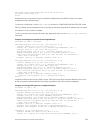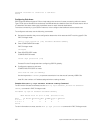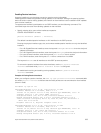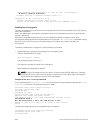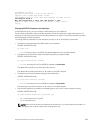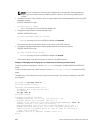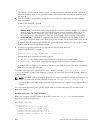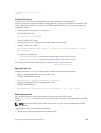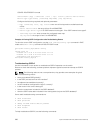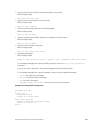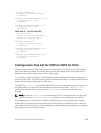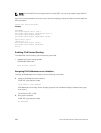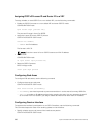
network 10.0.2.0/24 area 0
Dell#
Creating Filter Routes
To filter routes, use prefix lists. OSPF applies prefix lists to incoming or outgoing routes.
Incoming routes must meet the conditions of the prefix lists. If they do not, OSPF does not add the route
to the routing table. Configure the prefix list in CONFIGURATION PREFIX LIST mode prior to assigning it
to the OSPF process.
• Create a prefix list and assign it a unique name.
CONFIGURATION mode
ip prefix-list prefix-name
You are in PREFIX LIST mode.
• Create a prefix list with a sequence number and a deny or permit action.
CONFIG- PREFIX LIST mode
seq sequence-number {deny |permit} ip-prefix [ge min-prefix-length] [le max-
prefix-length]
The optional parameters are:
– ge min-prefix-length: is the minimum prefix length to match (from 0 to 32).
– le max-prefix-length: is the maximum prefix length to match (from 0 to 32).
For configuration information about prefix lists, refer to Access Control Lists (ACLs).
Applying Prefix Lists
To apply prefix lists to incoming or outgoing OSPF routes, use the following commands.
• Apply a configured prefix list to incoming OSPF routes.
CONFIG-ROUTEROSPF-id mode
distribute-list prefix-list-name in [interface]
• Assign a configured prefix list to outgoing OSPF routes.
CONFIG-ROUTEROSPF-id
distribute-list prefix-list-name out [connected | isis | rip | static]
Redistributing Routes
You can add routes from other routing instances or protocols to the OSPF process.
With the redistribute command, you can include RIP, static, or directly connected routes in the OSPF
process.
NOTE: Do not route iBGP routes to OSPF unless there are route-maps associated with the OSPF
redistribution.
To redistribute routes, use the following command.
• Specify which routes are redistributed into OSPF process.
Open Shortest Path First (OSPFv2 and OSPFv3)
659



